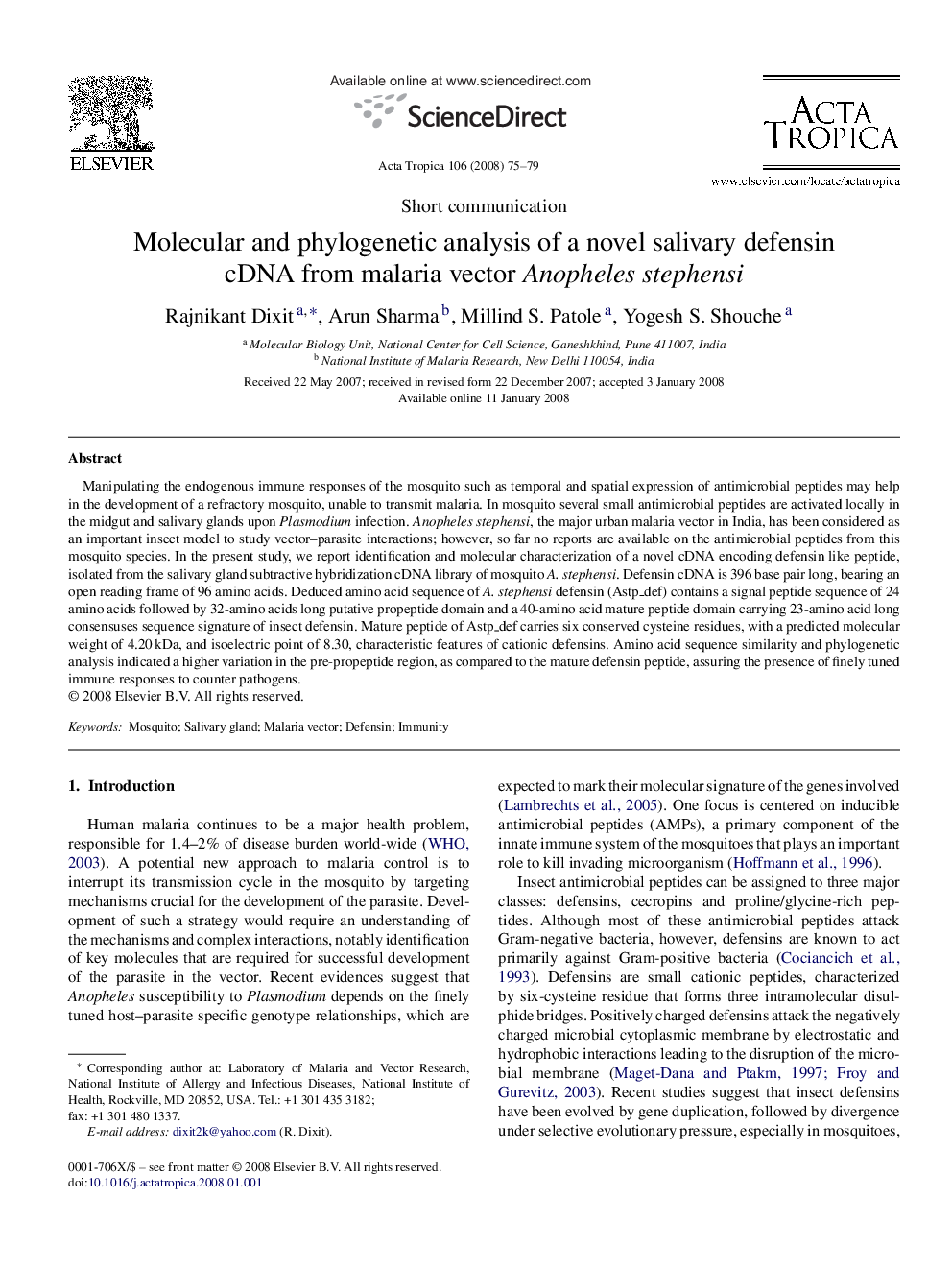| Article ID | Journal | Published Year | Pages | File Type |
|---|---|---|---|---|
| 3394442 | Acta Tropica | 2008 | 5 Pages |
Manipulating the endogenous immune responses of the mosquito such as temporal and spatial expression of antimicrobial peptides may help in the development of a refractory mosquito, unable to transmit malaria. In mosquito several small antimicrobial peptides are activated locally in the midgut and salivary glands upon Plasmodium infection. Anopheles stephensi, the major urban malaria vector in India, has been considered as an important insect model to study vector–parasite interactions; however, so far no reports are available on the antimicrobial peptides from this mosquito species. In the present study, we report identification and molecular characterization of a novel cDNA encoding defensin like peptide, isolated from the salivary gland subtractive hybridization cDNA library of mosquito A. stephensi. Defensin cDNA is 396 base pair long, bearing an open reading frame of 96 amino acids. Deduced amino acid sequence of A. stephensi defensin (Astp_def) contains a signal peptide sequence of 24 amino acids followed by 32-amino acids long putative propeptide domain and a 40-amino acid mature peptide domain carrying 23-amino acid long consensuses sequence signature of insect defensin. Mature peptide of Astp_def carries six conserved cysteine residues, with a predicted molecular weight of 4.20 kDa, and isoelectric point of 8.30, characteristic features of cationic defensins. Amino acid sequence similarity and phylogenetic analysis indicated a higher variation in the pre-propeptide region, as compared to the mature defensin peptide, assuring the presence of finely tuned immune responses to counter pathogens.
